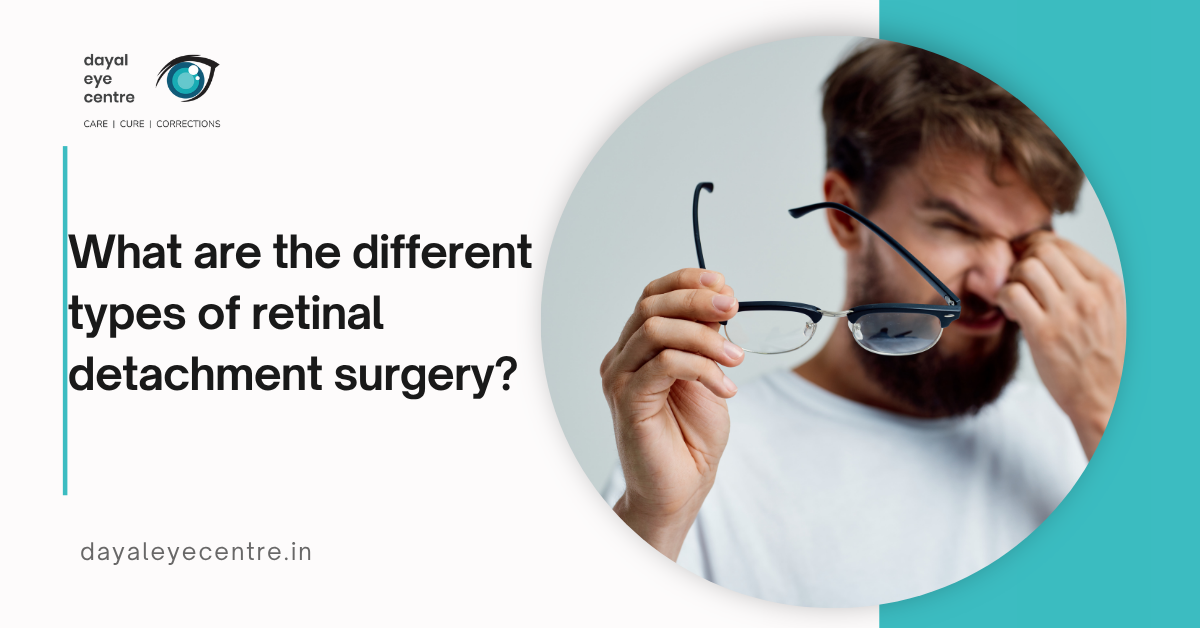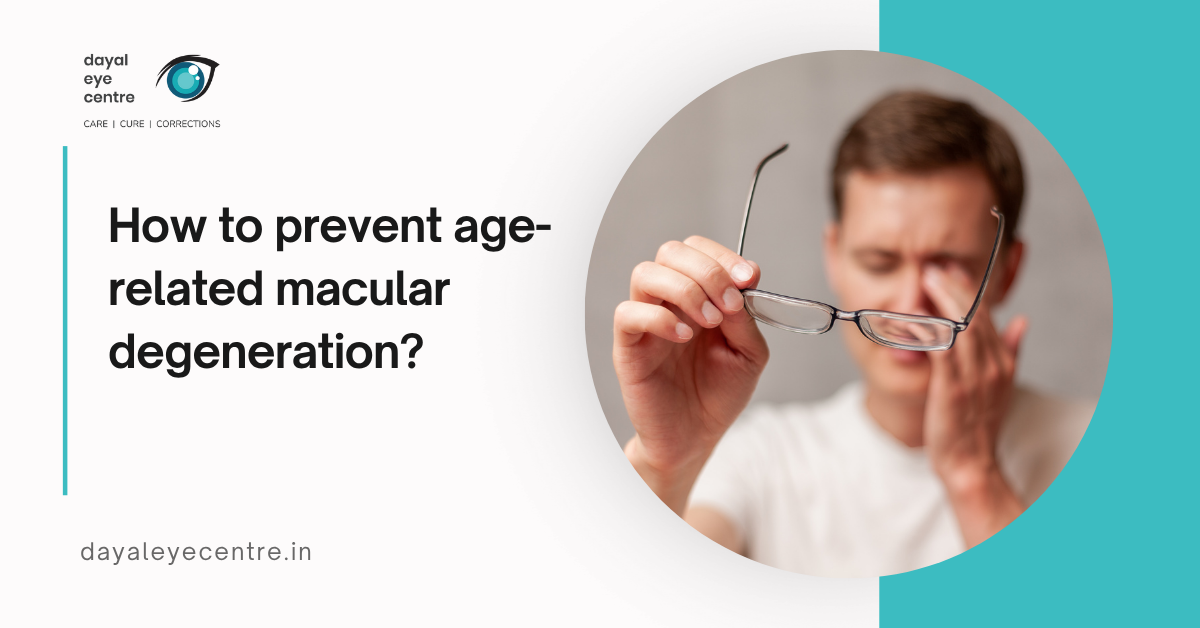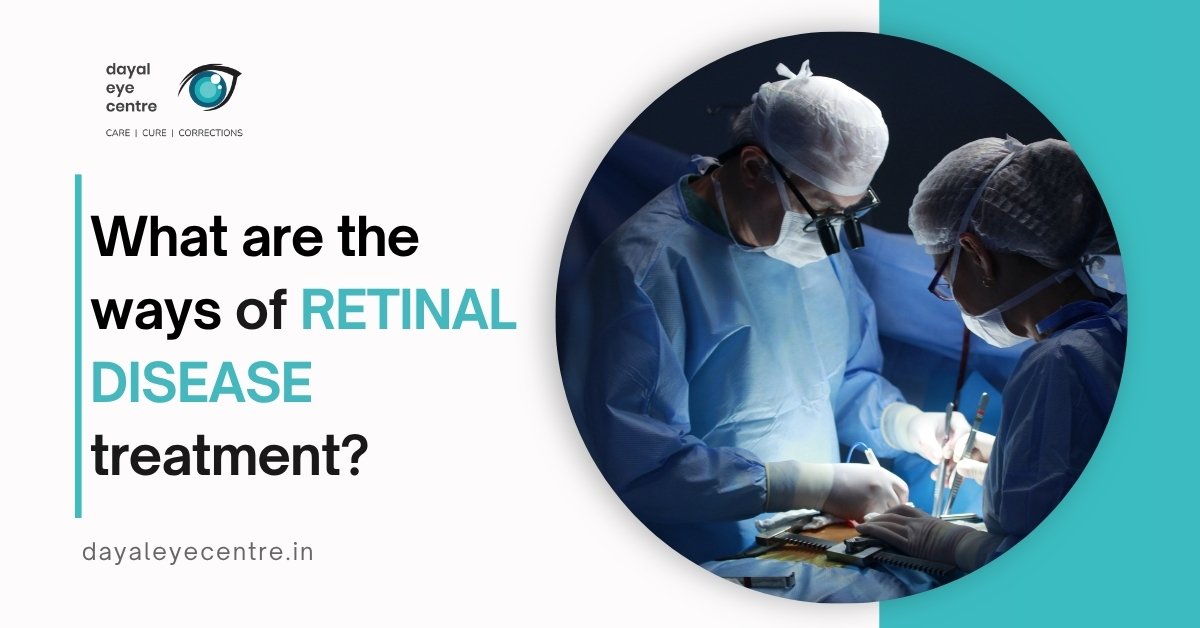Most patients experience dry eye symptoms after LASIK surgery – studies show this affects more than 95% of cases. Your eyes need proper care with eye drops during recovery, making them a crucial part of the healing process rather than just an optional treatment.
The initial healing period requires different types of drops to protect your eyes. These drops serve three main purposes: preventing infection, reducing inflammation, and maintaining moisture. Your doctor will typically prescribe a combination of antibiotic drops, steroid drops, and artificial tears to ensure proper healing and comfort.
Talk with your eye doctor about the right drops for your recovery. This guide explains the types of drops you’ll need, when to use them, and how to select the best options. Whether you’re planning for LASIK or already recovering from surgery, understanding proper eye drop use helps ensure successful healing outcomes.
Why You Need Eye Drops After LASIK
Our natural lens and cornea work together like a camera system to focus light properly. LASIK surgery changes this delicate system by creating a small flap in your cornea. This process temporarily affects the corneal nerves that control tear production. Think of these nerves like sensors – when damaged, they can’t properly signal when your eyes need moisture.
How LASIK affects your eyes
The surgical changes to your cornea affect its natural ability to stay moist. Your tear film may not spread evenly across the eye surface, similar to how water beads up instead of spreading smoothly on certain surfaces. The surgery also reduces mucin, a substance that helps tears stick to your eye. These changes explain why half of LASIK patients experience dry eyes in the first week after surgery.
When the procedure disrupts corneal nerves, it breaks the communication between your cornea and tear glands. While this connection typically returns to normal, healing takes time. The reshaped cornea also changes how your eyelid moves across your eye’s surface, affecting both your blinking pattern and tear production.
Common post-surgery symptoms
Right after LASIK, you’ll likely notice several temporary changes in your vision and comfort. Your eyes might burn, itch, or feel like they have something in them. Watch for these common symptoms:
- Sensitivity to light and glare
- Blurred or hazy vision
- Watery eyes
- Mild discomfort
- Redness in your eyes
Most of these symptoms improve within the first few days. However, dry eye remains the most common side effect, affecting about 30% of LASIK patients. The condition often becomes most noticeable around three months after surgery.
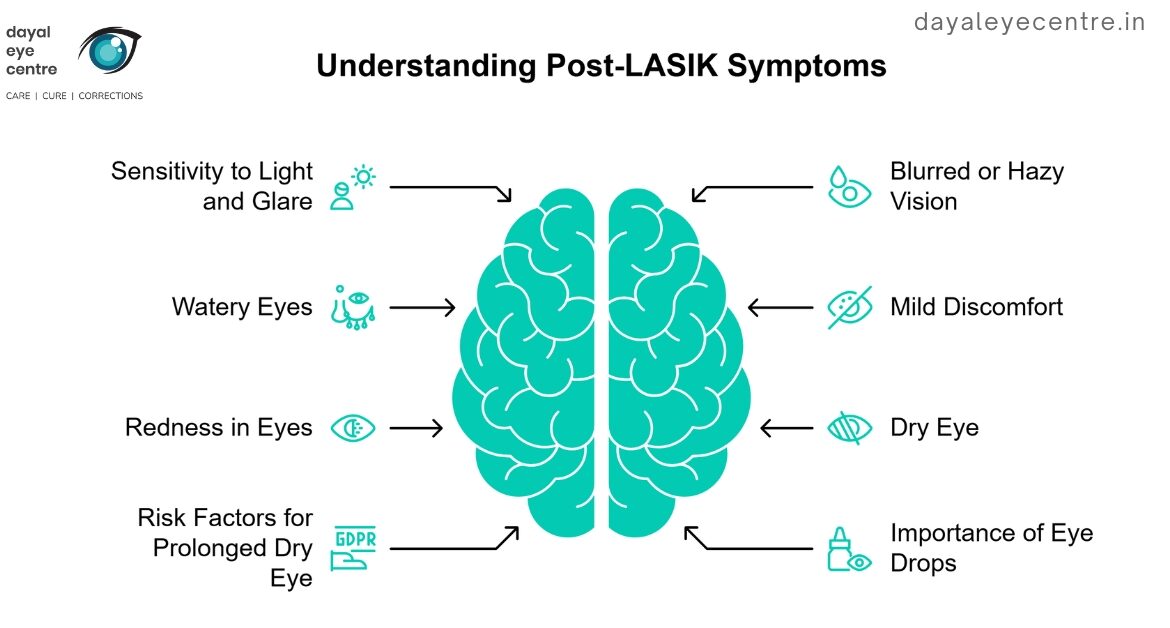
Recovery varies among patients. About 40% still experience dry eyes after one month, dropping to 20-40% by six months. For most people, these symptoms go away within 6-12 months. Your risk of prolonged dry eye symptoms increases with certain factors:
- Pre-existing dry eye problems
- Being female
- Asian descent
- Contact lens wear
- Diabetes
- High degree of vision correction needed
Your vision may change during the first few months as healing progresses. During this time, eye drops become essential tools for your recovery. They help keep your eyes moist, prevent infection, and control inflammation – all crucial for achieving the best possible outcome from your surgery.
Types of Post-LASIK Eye Drops
Post-LASIK recovery requires three main types of eye drops, much like how our natural eyes need different components to stay healthy. Let’s understand how each type of drop helps your healing process.
Antibiotic drops
Think of antibiotic drops as your eye’s first shield against infection after LASIK surgery. These drops create a protective barrier when your eyes are most vulnerable during early healing. Your surgeon will prescribe these for the first 7-10 days after surgery. The most common antibiotics used are Moxifloxacin and Ofloxacin, which fight many types of bacteria that could cause infection.
Anti-inflammatory drops
Just as our body needs help controlling swelling after any surgery, your eyes need steroid drops to manage inflammation. These drops contain medicines like Loteprednol and Prednisolone. Most patients use them for 5-14 days after surgery. Rather than stopping these drops suddenly, your doctor will create a tapering schedule. This gradual decrease helps prevent inflammation from returning and supports smoother healing.
Artificial tears
Our natural tears keep our eyes comfortable and healthy. After LASIK, artificial tears become essential since the surgery temporarily affects your natural tear production. You’ll likely need these drops every 2 hours for at least 10 weeks after surgery. Talk with your doctor about preservative-free options – they’re gentler on healing eyes.
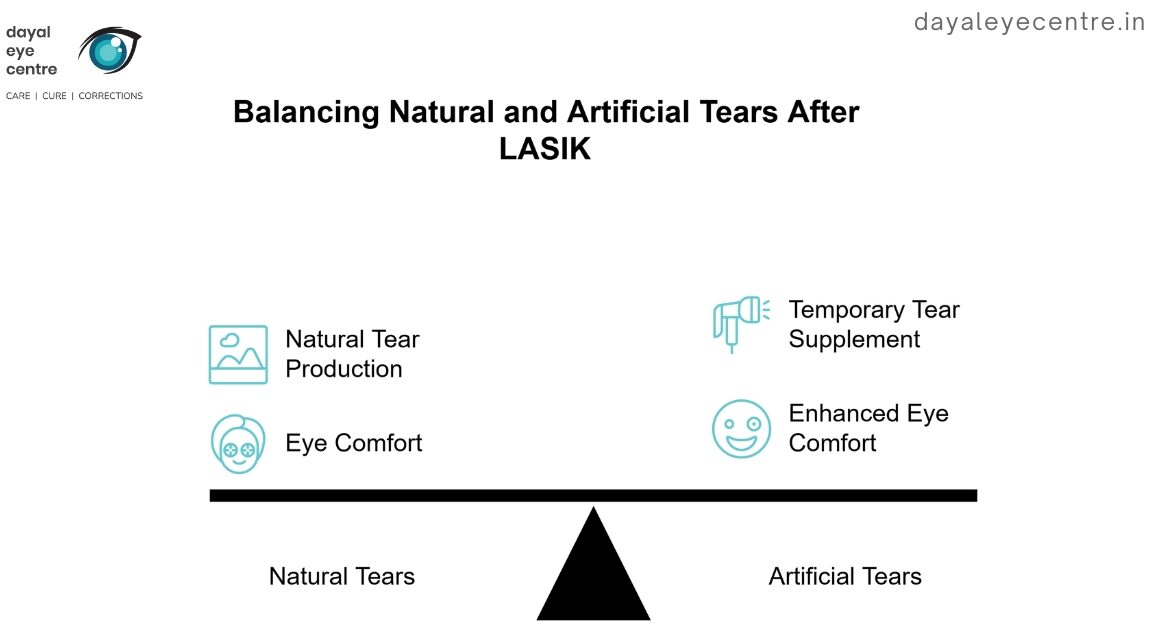
Recent research shows promising results with newer artificial tear formulas. For example, drops that combine carboxymethylcellulose (CMC) and hyaluronic acid (HA) work better together. Some formulas also include special ingredients like glycerin and erythritol that help protect your eye’s surface cells.
Several trusted brands like Systane, Refresh, and TheraTears offer good options. Each brand has different formulas – some provide longer-lasting moisture while others focus on extra comfort. Your surgeon will recommend specific brands based on how your eyes respond during healing.
When to Use Different Eye Drops
Just like how our natural tears work in harmony, the timing of your eye drops after LASIK surgery plays a crucial role in healing. Let’s look at when to use each type of drop for the best results.

First week schedule
The first week needs the most careful attention to your eye drop schedule. Use antibiotic drops four times each day for seven days. Your anti-inflammatory drops also need four daily applications during this first week. For artificial tears, put one drop in each eye every hour while you’re awake.
Here’s an important tip that many patients overlook: wait 5-10 minutes between different types of drops. This prevents one medication from washing away another. Your doctor will likely recommend single-use, preservative-free vials instead of bottles for the first two weeks to keep your eyes safe from infection.
Weeks 2-4 routine
Your eye drop schedule becomes simpler after the first week. For artificial tears, follow this pattern:
- Week 2: Put drops in every 2 hours while awake
- Week 3: Use drops every 3 hours while awake
- Week 4: Apply drops every 4 hours while awake
Most patients stop using antibiotic and anti-inflammatory drops after the first week, following their surgeon’s instructions. Some eyes need anti-inflammatory drops for two weeks, depending on how they heal.
Long-term usage guide
After the first month, artificial tears become your main eye drop. Dry eye symptoms can last 6 to 12 months after surgery. Studies tell us that about 60% of patients still notice dry eyes after their first month of recovery.
Keep these tips in mind for long-term care:
- Take artificial tears with you wherever you go
- Choose preservative-free drops if you use them more than four times daily
- Talk to your doctor if artificial tears aren’t giving enough relief
- During computer work, take breaks and use drops to avoid eye strain
Remember, you can safely use artificial tears more often when your eyes feel dry. Trust how your eyes feel to guide how often you need drops, especially during activities that tire your eyes.
Best Eye Drops for LASIK Recovery
Just as our natural tears have specific components that keep our eyes healthy, choosing the right eye drops makes a significant difference in your LASIK recovery. Studies show that preservative-free options are safest, with over 95% of doctors recommending them for post-surgery care.

Top preservative-free options
Several trusted brands offer drops that work well after LASIK:
- Refresh Optive Advanced: These drops provide quick, lasting relief. They contain special ingredients that protect your eye’s surface cells from stress.
- Systane Ultra: Made specifically for sensitive eyes after LASIK, these drops keep your eyes moist without harmful preservatives.
- TheraTears: Eye doctors developed these drops to work like your natural tears, making them especially good for healing.
- Blink Tears: These drops help keep your eyes moist throughout the day.
- Oasis Tears Plus: Contains hyaluronate to help tears stay on your eye’s surface longer.
What ingredients to look for
The way smudgy lenses cause blurry vision, poor quality drops can affect your healing. Look for these key ingredients:
- Hyaluronic Acid (HA): Think of this like a moisture magnet for your eyes. Research shows that HA increases viscosity and promotes corneal epithelial wound healing.
- Carboxymethylcellulose (CMC): When combined with HA, CMC helps your eye’s surface heal better and improves vision clarity.
- Organic Osmolytes: Ingredients like glycerin and erythritol protect your eye’s surface cells.
Recent studies tell us that drops containing both CMC and HA work better than those with just one ingredient. These combinations keep your eyes moist longer and help you see clearly sooner.
Talk with your eye doctor about preservative-free drops, especially during early healing when you need drops frequently. While preservatives help drops last longer, they can irritate your eyes if used more than four to six times daily [53, 54].
For some patients with very dry eyes, your doctor might recommend prescription drops like Restasis or Xiidra. Unlike regular artificial tears, these medicines help your eyes make more natural tears, though they take several weeks to work fully.
Conclusion
Just as our natural lens needs proper care, your eyes need careful attention after LASIK surgery. Think of eye drops as essential tools in your recovery kit – each type serves a specific purpose. Antibiotic drops guard against infection, anti-inflammatory drops control swelling, while artificial tears provide the moisture your healing eyes need.
Most patients notice their eyes feeling better within the first few months. Some might need artificial tears for up to a year, similar to how glasses might be needed temporarily after other eye procedures. When choosing drops, especially during the early weeks when you use them frequently, look for preservative-free options to keep your eyes comfortable.
Talk with your eye doctor about your recovery progress. Book an appointment with our experts at Daya Eye Center to ensure your healing stays on track. Remember, using your prescribed drops consistently, along with regular check-ups, helps achieve the best possible results from your LASIK surgery.
FAQs
1. What types of eye drops are recommended after LASIK surgery?
After LASIK, you’ll typically need three types of eye drops: antibiotic drops to prevent infection, anti-inflammatory drops to reduce swelling, and artificial tears to keep your eyes moisturized. Your surgeon will provide specific instructions on which drops to use and when.
2. How long do I need to use eye drops after LASIK?
The duration varies, but most patients use antibiotic and anti-inflammatory drops for about a week. Artificial tears are often needed for several months, with some patients using them for up to a year. Always follow your doctor’s specific instructions for your recovery.
3. Are preservative-free eye drops better for LASIK recovery?
Yes, preservative-free eye drops are generally recommended for LASIK recovery, especially if you’re using them frequently. They minimize irritation and are gentler on healing eyes. Most eye doctors recommend preservative-free options, particularly during the initial recovery phase.
4. How often should I use artificial tears after LASIK?
In the first week after LASIK, you may need to use artificial tears hourly while awake. After that, the frequency typically decreases. By week 4, you might only need them every 4 hours. However, you can adjust usage based on your comfort level and your doctor’s recommendations.
5. What ingredients should I look for in post-LASIK eye drops?
Look for eye drops containing hyaluronic acid (HA) and carboxymethylcellulose (CMC), which promote healing and provide long-lasting moisture. Some drops also include organic osmolytes like glycerin and erythritol, which help reduce cellular stress on the eye surface. Multi-ingredient formulations combining these components are often most effective.



